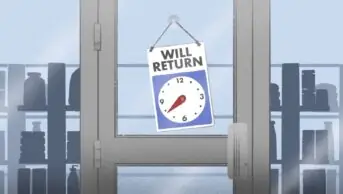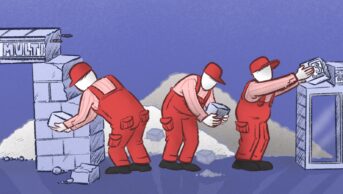
Nic Bunce/Shutterstock.com
Open access article
The Royal Pharmaceutical Society has made this article free to access in order to help healthcare professionals stay informed about an issue of national importance.
To learn more about coronavirus, please visit: https://www.rpharms.com/resources/pharmacy-guides/wuhan-novel-coronavirus

Source: Nic Bunce/Shutterstock.com
Staff shortages have led to dramatically increased workloads and occasional, temporary pharmacy closures owing to exhaustion
Small-to-medium sized pharmacy chains are operating with up to 15% of their community pharmacy staff off work as a result of COVID-19, The Association of Independent Multiple Pharmacies (AIMp) has said.
In a statement to The Pharmaceutical Journal, Leyla Hannbeck, chief executive of AIMp, said there was a 7–15% absence rate among its member pharmacies, owing to the virus.
She added that, in addition to having fewer staff, pharmacies are seeing a 20% increase in scripts, with twice as many patients in the pharmacies as “lots of people [are] coming in for advice and then buying over-the-counter”.
As a result, she said that many contractors “have had to close some pharmacies periodically due to exhaustion”.
“Some of our members have reported neighbouring pharmacies shutting down and this has caused a lot of volume to move to pharmacies that are open, and caused large queues,” she said.
Both Day Lewis, which operates 270 pharmacies, and PCT Healthcare, which has 63 pharmacies, told The Pharmaceutical Journal that they currently had about 10% of their pharmacy workforce off work.
However, Sam Patel, executive director at Day Lewis Pharmacy, said the estimate “is very fluid in the current environment”.
“Thankfully, community pharmacy has an immensely committed workforce and, across the country, people have worked incredibly hard to support their patients in these unprecedented times.
“They are all heroes,” he said.
Peter Cattee, chief executive officer of PCT Healthcare, added that the workload in his pharmacies “is up 25% on average,” with patient interactions taking longer.
“The impact is [that] it makes for an even more high-pressured environment,” he said, but declined to confirm whether any of his pharmacies have closed as a result of staff absences.
The absence rate comes after the government estimated in its ‘Coronavirus action plan’, published on 3 March 2020, that “up to one-fifth of employees may be absent from work during peak weeks”.
Meanwhile, some local pharmaceutical committees (LPCs) have estimated that up to half of the workforce in their area is unable to work, either because they have COVID-19 symptoms themselves or because they are in 14-day quarantine with an unwell household member.
Nick Hunter, chief officer of Nottinghamshire, Rotherham and Doncaster LPCs, told The Pharmaceutical Journal that he estimates “pharmacies are running with a third to half of their workforce down”, adding that this also includes staff who are considered ‘at-risk’ and unable to work.
He said that across his LPCs there have been “a handful of partial closures — for half days or whole days”.
“Some [were] planned where there are insufficient staff to cover all pharmacies, say within a company in the area, and some [were] unplanned — usually where the pharmacists came down with COVID-19 symptoms and the pharmacy couldn’t get a locum straight away,” he said.
A ‘community pharmacy status update’ sent by Coventry, Warwickshire and Herefordshire & Worcestershire LPC to other healthcare workers in the area highlighted that most of its pharmacies “are also operating with 50% or less staff”.
Fiona Lowe, chief executive of the three LPCs, said the comment was “based on feedback” from pharmacies and represents a “constantly changing” picture “as some go off [work] and some come back in”.
Andrew Hartley, acting chief officer Sheffield LPC, told The Pharmaceutical Journal that HR departments of pharmacy multiples were “very quick” to remove staff with underlying health conditions who would have been at risk.
“That meant that quite a large number of staff had to be sent home, which has brought additional workload,” he said.
“I know of pharmacies which have been able to move staff around to those where they have lost 50% [or more] of their staff. On top of that, they’ve then got staff on 14-day isolation. That’s another layer.”


